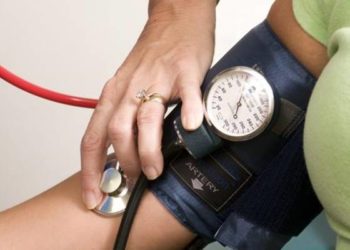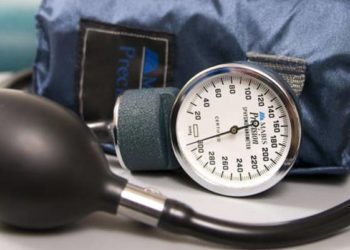Automated office blood pressure measurement more accurate than routine office readings
1. In this systematic review and meta-analysis, routine office systolic blood pressure readings were, on average, higher than automated office blood pressure readings.
2. Awake ambulatory blood pressure monitoring results were similar to automated office blood pressure monitoring.
Evidence Rating Level: 1 (Excellent)
Study Rundown: Hypertension is a well-established cardiovascular risk factor and one of the most common chronic diseases worldwide. Awake ambulatory blood pressure (AABP) monitoring is currently considered the gold standard as it avoids skewing factors such as ‘white coat hypertension’ and averages blood pressure readings across a longer period. However, this method is time consuming, more expensive, and impractical for many patients. A way to replicate this in the office setting is the automated office blood pressure (AOBP) measurement, which uses oscillometric sphygmomanometers with built in delays that allow for patients to be left alone, without the presence of health care providers nearby, and to have multiple measurements averaged over a short time period.
In this systematic review and meta-analysis including 31 studies and almost 9300 patients, AOBP measurement was similar to the gold standard of AABP monitoring. Routine in office blood pressure (ROBP) measurements were significantly higher, with a mean systolic pressure difference of 14.5 mmHg compared with AOBP measurement. This effect was consistent whether ROBP measurement was performed manually or with an automated machine (without automated delays, averaging, and patient isolation involved in AOBP measurement). Although there was a fair degree of heterogeneity between studies, the large sample size and mean difference support the results of this study.
Click to read the study in JAMA Internal Medicine
Relevant Reading: Eliminating the Human Factor in Office Blood Pressure Measurement .
In-Depth [systematic review and meta-analysis]: This was a systematic review and meta-analysis searching MEDLINE, Embase, and Cochrane Library for articles published between 2003 and 2018. Only articles with 30 or more participants were included. Inclusion criteria included being a full-text article including unattended and fully automated office blood pressure measurement, reporting mean difference and standard error (or ability to calculate these) between AOBP and at least one of awake ambulatory blood pressure measurement/research blood pressure (RBP) measurement/routine office blood pressure measurement, maximum 1 month between measurement using various methods, maximum interval between AOBP measurements of 2 minutes each, and at least 3 readings on AOBP measurement. AABP monitoring was considered the gold standard.
Of 2359 initial full articles, 59 were reviewed in full text, 31 articles met inclusion criteria encompassing 9279 participants (51% male). Sample sizes ranged from 31 to 2145 participants. Weighted mean age was 55.9 years (range 39 – 69.5 years), and patients had a mean systolic blood pressure of over 130 mmHg in approximately half (4982 patients). Most studies were conducted in Canada (18 of 31). After meta-analysis, the pooled mean difference in systolic blood pressure between ROBP and AABP measurement was 13.4 mmHg (95% CI 9.5-17.5, I2 96%, p<0.001). The pooled mean difference between AOBP and AABP measurement was negligible at 0.3 mmHg.
Image: PD
©2019 2 Minute Medicine, Inc. All rights reserved. No works may be reproduced without expressed written consent from 2 Minute Medicine, Inc. Inquire about licensing here. No article should be construed as medical advice and is not intended as such by the authors or by 2 Minute Medicine, Inc.







